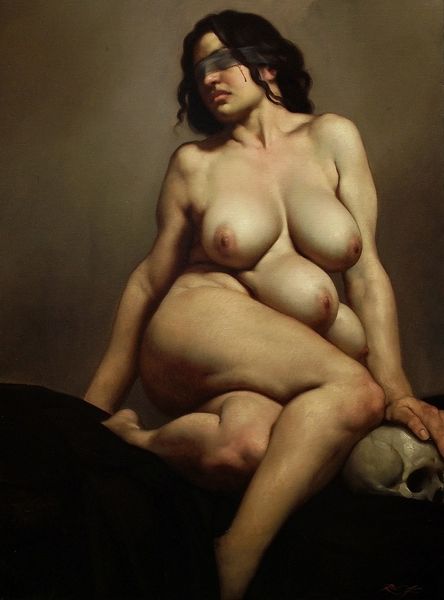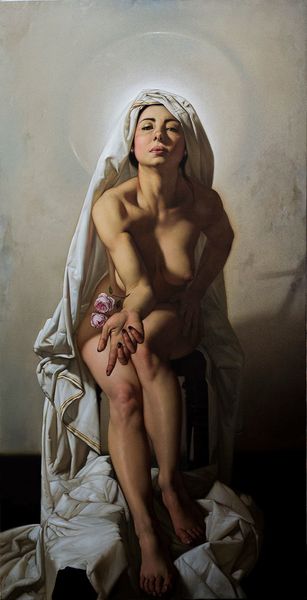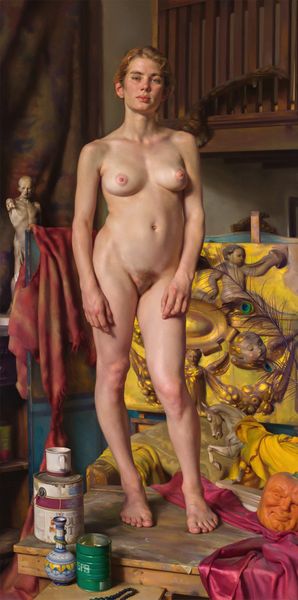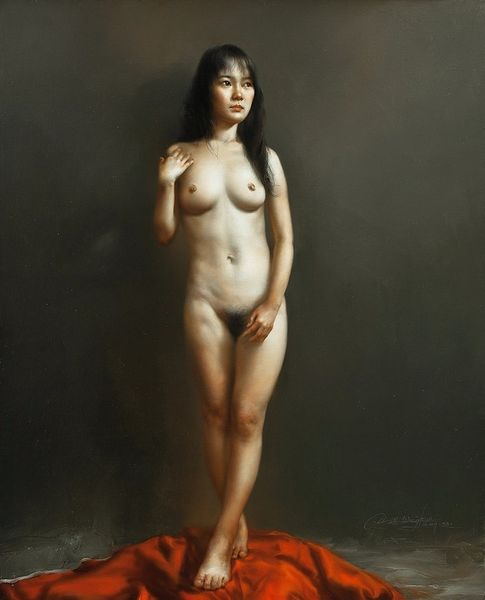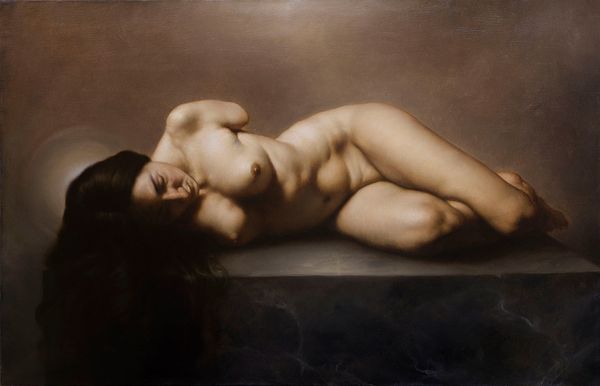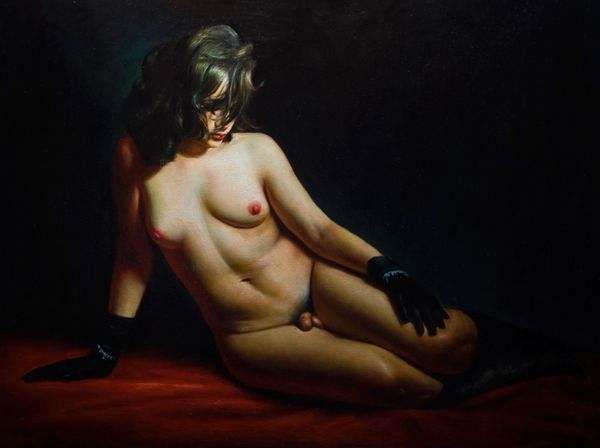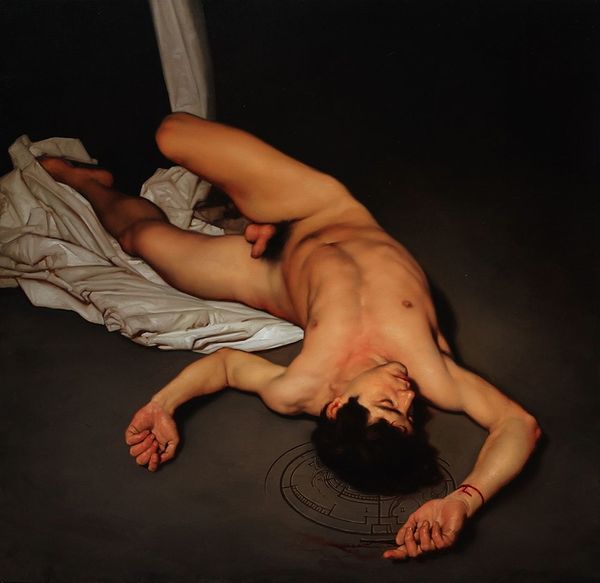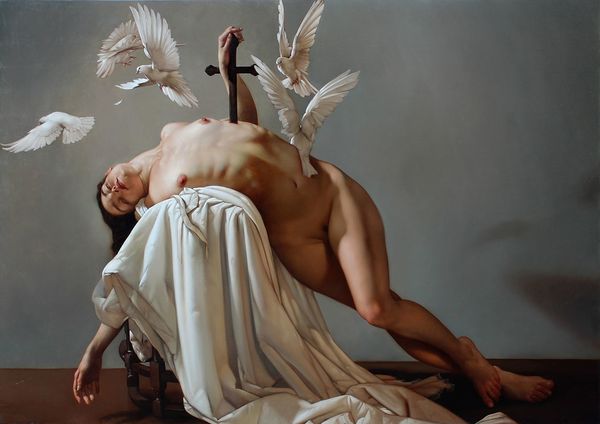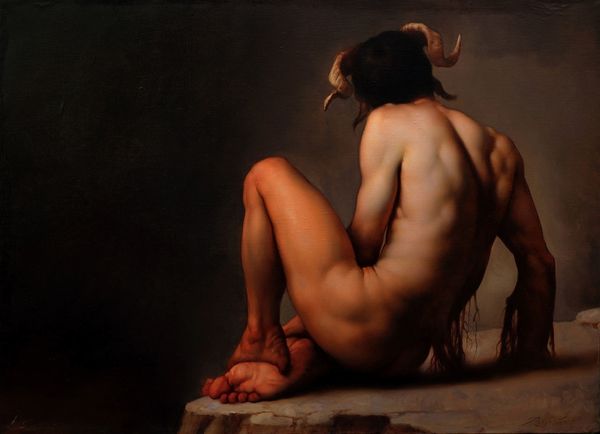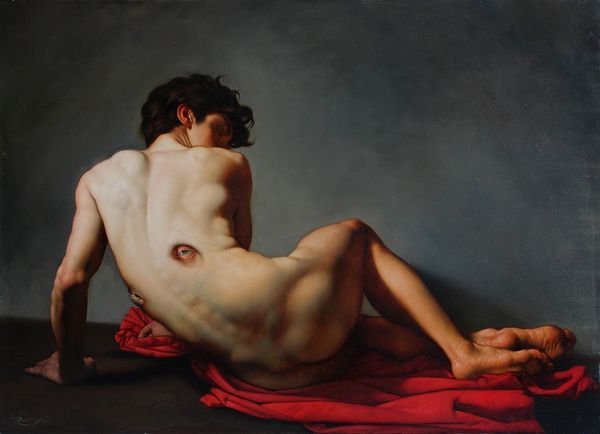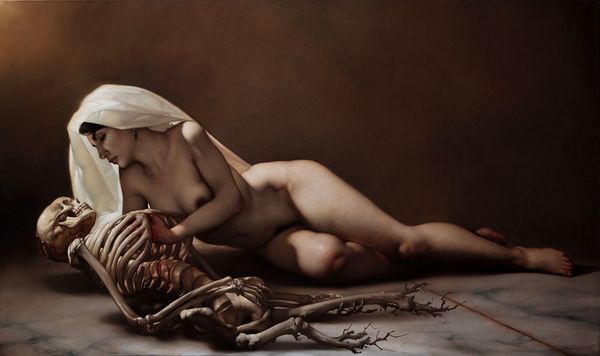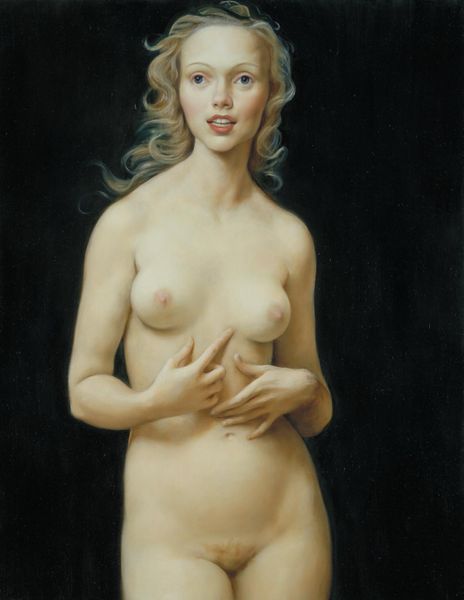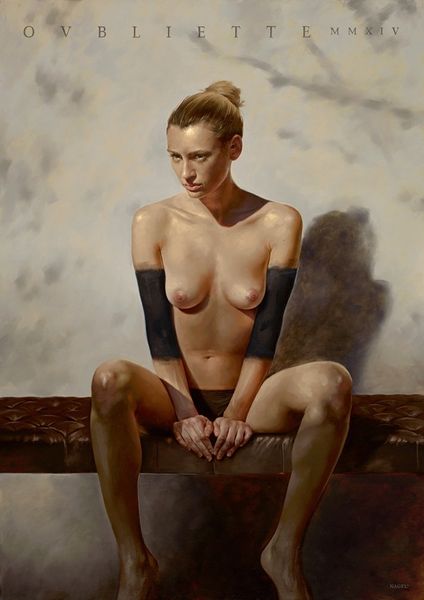
painting, oil-paint
#
portrait
#
contemporary
#
painting
#
oil-paint
#
figuration
#
history-painting
#
academic-art
#
nude
#
surrealism
#
erotic-art
#
realism
Copyright: Modern Artists: Artvee
Curator: Here we have Roberto Ferri's "Tracce Di Dio," painted in 2017. Ferri is a contemporary artist working very much within the traditions of the old masters, creating powerfully charged figurative works. Editor: My initial impression is of stark contrasts, a strange visual poem in grayscale: the soft, pale flesh against the rigid black iron of the cross, all set against an indistinct background. Curator: The contrasts go deeper. We see a vulnerable, nude female figure chained at her ankles, positioned almost erotically. Yet, she reaches upwards, towards the heavens, next to the solemn symbol of Christian sacrifice. Editor: Absolutely. Look at how Ferri employs chiaroscuro. The stark lighting sculpts the body, accentuating its curves while simultaneously drawing attention to the severity of the cross. Semiotically, it's a brilliant study in opposing forms and textures, almost academic in nature, yet decidedly modern. Curator: Right. The chains could be read as literal constraints imposed by religious dogma or societal expectations on the female form. The upturned gaze could then be seen as a symbol of yearning for transcendence beyond these patriarchal structures. It’s fascinating to see Ferri, in his surrealistic manner, engage with historical painting traditions. Editor: I'm captivated by the almost tangible quality of the flesh, achieved through masterful blending and glazing. It's undeniably sensual, a formal exercise in representing the human figure. However, the woman’s pale skin stands in stark contrast with her dark hair and brow, suggesting a more somber mood. Curator: That tension, that ambiguity is crucial. Is she a victim, or is she defiant? Ferri seems to leave that question unanswered, forcing us to confront the complex relationship between the sacred and the profane. Editor: Indeed, this intersection is enhanced by the formal aspects of the piece: notice how the composition compels your gaze towards that raised finger as if seeking an answer, yet that cross seems like an immovable burden. Curator: Considering Ferri’s academic training in Rome, this work speaks to a broader socio-political dialogue about the Catholic Church, sexuality, and power that persists to this day. Editor: I concur; by analyzing the lines, colours, and contrasts alone, we arrive at the work's intrinsic ability to invite the viewer into profound thought and questioning. Curator: So it's more than just aesthetic beauty; it is about a modern intersectional approach to feminine identity and freedom, steeped in both religious imagery and contemporary desire. Editor: Yes, the forms themselves—the figure, the cross, the bones—transcend their immediate visual presence. What at first appears like another nude, on closer viewing shows us both confinement and the longing to go beyond our limitations.
Comments
No comments
Be the first to comment and join the conversation on the ultimate creative platform.
